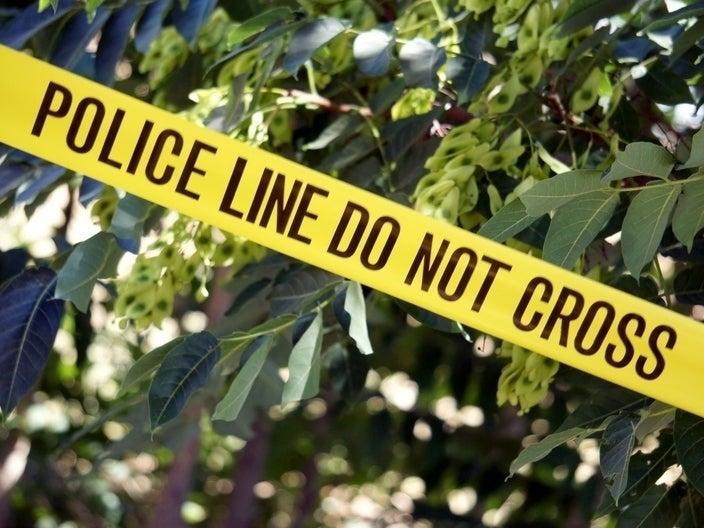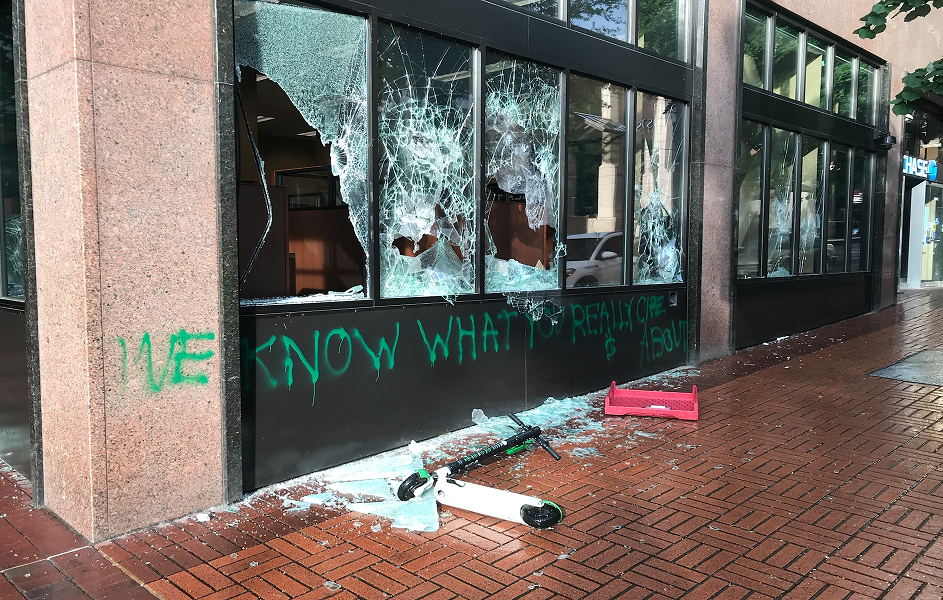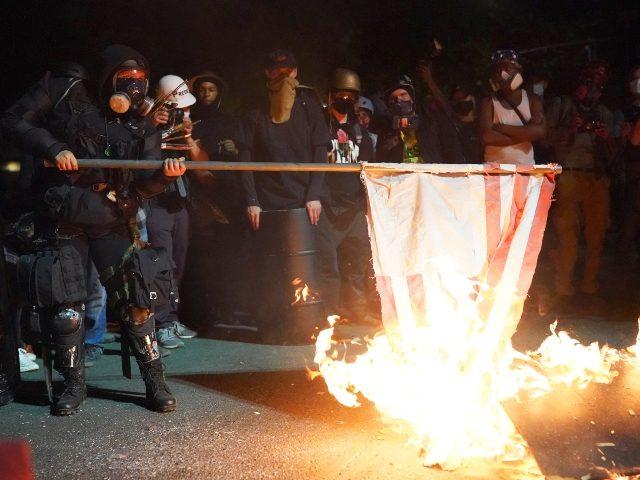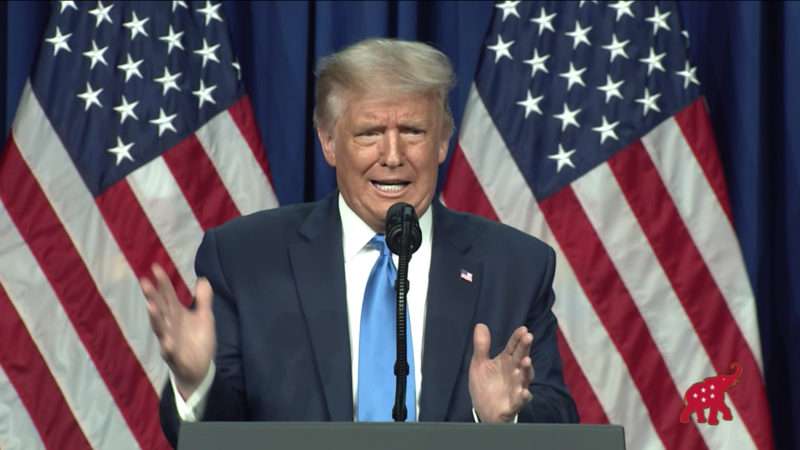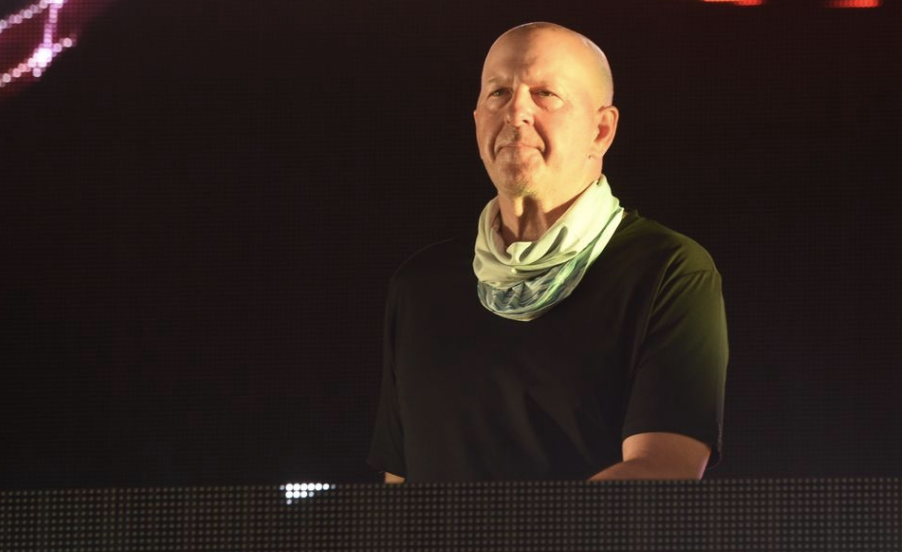Attack Of The Tomato Killers: The Police State’s War On Weed And Backyard Gardens
Tyler Durden
Tue, 08/25/2020 – 23:25
Authored by John Whitehead via The Rurtherford Institute,
“They came again this morning at about 8:00 o’clock. A large cargo-type helicopter flew low over the cabin, shaking it on its very foundations. It shook all of us inside, too. I feel frightened … I see how helpless and tormented I am becoming with disgust and disillusionment with the government which has turned this beautiful country into a police state … I feel like I am in the middle of a war zone.”
– Journal entry from a California resident describing the government’s aerial searches for marijuana plants
Backyard gardeners, beware: tomato plants have become collateral damage in the government’s war on drugs, especially marijuana.
In fact, merely growing a vegetable garden on your own property, or in a greenhouse on your property, or shopping at a gardening store for gardening supplies—incredibly enough—could set you up for a drug raid sanctioned by the courts.
It’s happened before.
After shopping for hydroponic tomatoes at their local gardening store, a Kansas family found themselves subjected to a SWAT team raid as part of a multi-state, annual campaign dubbed “Operation Constant Gardener,” in which police collected the license plates of hundreds of customers at the gardening store and then investigated them for possible marijuana possession.
By “investigated,” I mean that police searched through the family’s trash. (You can thank the Supreme Court and their 1978 ruling in California v. Greenwood for allowing police to invade your trash can.) Finding “wet glob vegetation” in the garbage, the cops somehow managed to convince themselves—and a judge—that it was marijuana.
In fact, it was loose-leaf tea, but those pesky details don’t usually bother the cops when they’re conducting field tests.
Indeed, field tests routinely read positive for illegal drugs even when no drugs are present. According to investigative journalist Radley Balko, “it’s almost as if these tests come up positive whenever the police need them to. A partial list of substances that the tests have mistaken for illegal drugs would include sage, chocolate chip cookies, motor oil, spearmint, soap, tortilla dough, deodorant, billiard’s chalk, patchouli, flour, eucalyptus, breath mints, Jolly Ranchers and vitamins.”
There’s a long list of innocent ingredients that could be mistaken for drugs and get you subjected to a raid, because that’s all it takes—just the barest whiff of a suspicion by police that you might be engaged in criminal activity—to start the ball rolling.
From there, these so-called “investigations” follow the usual script: judge issues a warrant for a SWAT raid based on botched data, cops raid the home and terrorize the family at gunpoint, cops find no drugs, family sues over a violation of their Fourth Amendment rights, and then the courts protect the cops and their botched raid on the basis of qualified immunity.
It happens all the time.
As Balko reports, “Police have broken down doors, screamed obscenities, and held innocent people at gunpoint only to discover that what they thought were marijuana plants were really sunflowers, hibiscus, ragweed, tomatoes, or elderberry bushes. (It’s happened with all five.)”
Surely, you might think, the government has enough on its hands right now—policing a novel coronavirus pandemic, instituting nationwide lockdowns, quelling civil unrests over police brutality—that it doesn’t need to waste time and resources ferreting out pot farmers.
You’d be wrong.
This is a government that excels at make-work projects in which it assigns at-times unnecessary jobs to government agents to keep them busy or employed.
In this case, however, the make-work principle (translation: making work to keep the police state busy at taxpayer expense) is being used to justify sending police and expensive military helicopters likely equipped with sophisticated surveillance and thermal imaging devices on exploratory sorties every summer—again at taxpayer expense—in order to uncover illegal marijuana growing operations.
Often, however, what these air and ground searches end up targeting are backyard gardeners growing tomato plants.
Just recently, in fact, eyewitnesses in Virginia reported low-flying black helicopters buzzing over rural and suburban neighborhoods as part of a multi-agency operation to search for marijuana growers. Oftentimes these joint operations involve local police, state police and the Army National Guard.
One woman reported having her “tomato plants complimented by the 7 cops that pulled up in my yard in unmarked SUVs, after a helicopter hovered over our house for 20 minutes this morning.” Another man reported a similar experience from a few years ago when police “showed up in unmarked SUV’s with guns pulled. Then the cops on the ground argued with the helicopter because the heat signature in the ‘copter didn’t match what was growing.”
Back in 2013, an aerial surveillance mission spotted what police thought might be marijuana plants. Two days later, dozens of city officials, SWAT team, police officers and code compliance employees, and numerous official vehicles including dozens of police cars and several specialized vehicular equipment, including helicopters and unmanned flying drones, descended on The Garden of Eden, a 3.5-acre farm in Arlington, Texas, for a 10-hour raid in search of marijuana that turned up nothing more than tomato, blackberry and okra plants.
These aerial and ground sweeps have become regular occurrences across the country, part of the government’s multi-million dollar Domestic Cannabis Eradication Program. Local cops refer to the annual military maneuvers as “Eradication Day.”
Started in 1979 as a way to fund local efforts to crack down on marijuana growers in California and Hawaii, the Eradication Program went national in 1985, right around the time the Reagan Administration enabled the armed forces to get more involved in the domestic “war on drugs.”
Writing for The Washington Post, Radley Balko describes how these raids started off, with the National Guard, spy planes and helicopters:
The project was called the Campaign Against Marijuana Production, or CAMP… In all, thirteen California counties were invaded by choppers, some of them blaring Wagner’s “Ride of the Valkyries” as they dropped Guardsmen and law enforcement officers armed with automatic weapons, sandviks, and machetes into the fields of California … In CAMP’s first year, the program conducted 524 raids, arrested 128 people, and seized about 65,000 marijuana plants. Operating costs ran at a little over $1.5 million. The next year, 24 more sheriffs signed up for the program, for a total of 37. CAMP conducted 398 raids, seized nearly 160,000 plants, and made 218 arrests at a cost to taxpayers of $2.3 million.
The area’s larger growers had been put out of business (or, probably more accurately, had set up shop somewhere else), so by the start of the second campaign in 1984, CAMP officials were already targeting increasingly smaller growers. By the end of that 1984 campaign, the helicopters had to fly at lower and lower altitudes to spot smaller batches of plants. The noise, wind, and vibration from the choppers could knock out windows, kick up dust clouds, and scare livestock. The officials running the operation made no bones about the paramilitary tactics they were using. They considered the areas they were raiding to be war zones. In the interest of “officer safety,” they gave themselves permission to search any structures relatively close to a marijuana supply, without a warrant. Anyone coming anywhere near a raid operation was subject to detainment, usually at gunpoint.
Right around the same time, in the mid-1980s, the federal government started handing out grants to local police departments to assist with their local boots-on-the-ground “war on drugs.” These grants (through the Byrne Grant program and COPS program, both of which started to be phased out under George W. Bush, only to be re-upped by Barack Obama) could be used to pay for additional police personnel, equipment, training, technical assistance and information systems. However, studies show that while these federal grants did not improve police effectiveness or drug deterrence, they did incentivize SWAT team raids.
But how do you go from a “war on drugs” to SWAT-style raids on vegetable gardens?
Connect the dots, starting with the government’s war on marijuana, the emergence of SWAT teams, the militarization of local police forces through the federal 1033 Program, which allows the Pentagon to transfer “vast amounts of military equipment—machine guns and ammunition, helicopters, night-vision gear, armored cars—to local police departments,” and the transformation of American communities into battlefields: as always, it comes back to the make work principle, which starts with local police finding ways to justify the use of military equipment and federal funding.
Each year, the government spends between $14 and $18 million funding helicopter sweeps and police overtime to help the states track down illegal marijuana plants. These sweeps are even being carried out in states where it’s now legal to grow marijuana.
The sweeps work like this: Local police, working with multiple state agencies including the National Guard, carry out ground and air searches of different sectors. Air spotters flying overhead in helicopters relay their findings to police on the ground, who then carry out a search-and-destroy mission.
Mark my words: the use of police drones will make these kinds of aerial missions even more common.
For the most part, aerial surveillance is legal. As Arthur Holland Michel writes for The Atlantic: “When it comes to law enforcement, police are likewise free to use aerial surveillance without a warrant or special permission. Under current privacy law, these operations are just as legal as policing practices whereby an officer spots unlawful activity while walking or driving through a neighborhood.”
There have been a few notable exceptions.
In 2015, the New Mexico Supreme Court ruled that surveillance from a low-flying helicopter conducting an aerial search for marijuana by state police and the national guard was illegal under the U.S. Constitution. The court reasoned that “when low-flying aerial activity leads to more than just observation and actually causes an unreasonable intrusion on the ground—most commonly from an unreasonable amount of wind, dust, broken objects, noise, and sheer panic—then at some point courts are c and require a warrant before law enforcement engages in such activity. The Fourth Amendment and its prohibition against unreasonable searches and seizures demands no less.”
In Philip Cobbs’ case, helicopter spotters claimed to have seen two lone marijuana plants growing in the wreckage of a fallen oak tree on the Virginia native’s 39-acre family farm.
Cobbs noticed the black helicopter circling overhead while spraying the blueberry bushes near his house. After watching the helicopter for several moments, Cobbs went inside to check on his blind, deaf 90-year-old mother. By the time he returned outside, several unmarked police SUVs had driven onto his property, and police (ten in all) in flak jackets, carrying semi-automatic weapons and shouting unintelligibly, had exited the vehicles and were moving toward him.
Of course, it was never about the two pot plants.
What the cops were really after was an excuse to search Cobbs’ little greenhouse, which he had used that spring to start tomato plants, cantaloupes, and watermelons, as well as asters and hollyhocks, which he planned to sell at a roadside stand near his home. The search of the greenhouse turned up nothing more than used tomato seedling containers.
Nevertheless, police charged Cobbs with misdemeanor possession of marijuana for the two plants they claimed to have found. Eventually, the charges were dismissed but not before The Rutherford Institute took up Cobbs’ case, which revealed that police hadn’t even bothered to secure a warrant before embarking on their raid of Cobbs’ property—a raid that had to cost taxpayers upwards of $25,000, at the very least—part of their routine sweep of the countryside in search of pot-growing operations.
Two plants or two hundred or no plants at all: it doesn’t matter.
A SWAT team targeted one South Carolina man for selling $50 worth of pot on two different occasions. The Washington Post reports: The SWAT team “broke down Betton’s door with a battering ram, then fired at least 57 bullets at him, hitting him nine times. He lost portions of his gallbladder, colon, bowel and rectum, and is paralyzed from the waist down. He also suffered damage to his liver, lung, small intestine and pancreas. Two of his vertebrae were damaged, and another was partially destroyed. Another bullet shattered his leg.” After security footage showed that most of what police said about the raid was a lie, the cops settled the case for $2.75 million.
Monetary awards like that are the exception, however.
Most of the time, the cops get away with murder and mayhem. Literally.
Bottom line: no amount of marijuana is too insignificant if it allows police to qualify for federal grants and equipment and lay claim to seized assets (there’s the profit motive) under the guise of fighting the War on Drugs.
SWAT teams carry out more than 80,000 no-knock raids every year. The vast majority of these raids are to serve routine drug warrants, many times for crimes no more serious than possession of marijuana.
Although growing numbers of states continue to decriminalize marijuana use and 9 out of 10 Americans favor the legalization of either medical or recreational/adult-use marijuana, the government’s profit-driven “War on Drugs”—waged with state and local police officers dressed in SWAT gear, armed to the hilt, and trained to act like soldiers on a battlefield, all thanks to funding provided by the U.S. government, particularly the Pentagon and Department of Homeland Security (DHS)—has not abated.
Since the formation of the DHS post-9/11, hundreds of billions of dollars in grants have flowed to local police departments for SWAT teams, giving rise to a “police industrial complex” that routinely devastates communities, terrorizes families, and destroys innocent lives.
No longer reserved exclusively for deadly situations, SWAT teams are now increasingly being deployed for relatively routine police matters, with some SWAT teams being sent out as much as five times a day. Nationwide, SWAT teams have been employed to address an astonishingly trivial array of criminal activity or mere community nuisances: angry dogs, domestic disputes, improper paperwork filed by an orchid farmer, and misdemeanor marijuana possession, to give a brief sampling.
Unfortunately, general incompetence, collateral damage (fatalities, property damage, etc.) and botched raids tend to go hand in hand with an overuse of paramilitary forces.
In some cases, officers misread the address on the warrant. In others, they simply barge into the wrong house or even the wrong building. In another subset of cases, police conduct a search of a building where the suspect no longer resides.
SWAT teams have even on occasion conducted multiple, sequential raids on wrong addresses or executed search warrants despite the fact that the suspect is already in police custody. Police have also raided homes on the basis of mistaking the presence or scent of legal substances for drugs. Incredibly, these substances have included tomatoes, sunflowers, fish, elderberry bushes, kenaf plants, hibiscus, and ragweed.
All too often, the shock-and-awe tactics utilized by many SWAT teams only increases the likelihood that someone will get hurt with little consequences for law enforcement, even when the raids are botched.
Botched SWAT team raids have resulted in the loss of countless lives, including children and the elderly. Usually, however, the first to be shot are the family dogs.
SWAT raids are usually carried out late at night or shortly before dawn. Unfortunately, to the unsuspecting homeowner—especially in cases involving mistaken identities or wrong addresses—a raid can appear to be nothing less than a violent home invasion, with armed intruders crashing through their door.
That’s exactly what happened to Jose Guerena, the young ex-Marine who was killed after a SWAT team kicked open the door of his Arizona home during a drug raid and opened fire. According to news reports, Guerena, 26 years old and the father of two young children, grabbed a gun in response to the forced invasion but never fired. In fact, the safety was still on his gun when he was killed. Police officers were not as restrained. The young Iraqi war veteran was allegedly fired upon 71 times. Guerena had no prior criminal record, and the police found nothing illegal in his home.
The problems inherent in these situations are further compounded by the fact that SWAT teams are granted “no-knock” warrants at high rates such that the warrants themselves are rendered practically meaningless.
This sorry state of affairs is made even worse by U.S. Supreme Court rulings that have essentially done away with the need for a “no-knock” warrant altogether, giving the police authority to disregard the protections afforded American citizens by the Fourth Amendment.
Clearly, as I make clear in my book Battlefield America: The War on the American People, something must be done.
When the war on drugs—a.k.a. the war on the American people—becomes little more than a thinly veiled attempt to keep SWAT teams employed and special interests appeased, it’s time to revisit our drug policies and laws.
“You take the Constitution, the Bill of Rights, all the rights you expect to have—when they come in like that, the only right you have is not to get shot if you cooperate. They open that door, your life is on the line,” concluded Bob Harte, whose home was raided by a SWAT team simply because the family was seen shopping at a garden store, cops found loose tea in the family’s trash and mistook it for marijuana.
“Our family will never be the same,” said Addie Harte, recalling the two-hour raid that had police invading their suburban home with a battering ram and AR-15 rifles. As The Washington Post reports:
Bob found himself flat on floor, hands behind his head, his eyes locked on the boots of the officer standing over him with an AR-15 assault rifle. “Are there kids?” the officers were yelling. “Where are the kids?” “And I’m laying there staring at this guy’s boots fearing for my kids’ lives, trying to tell them where my children are,” Harte recalled later in a deposition on July 9, 2015. “They are sending these guys with their guns drawn running upstairs to bust into my children’s house, bedroom, wake them out of bed.”
It didn’t matter that no drugs were found—nothing but a hydroponic tomato garden and loose tea leaves. The search and SWAT raid were reasonable, according to the courts.
There’s a lesson here for the rest of us. As Bob Harte concluded: “If this can happen to us, everybody in the country needs to be afraid.”
via ZeroHedge News https://ift.tt/2QmF0nT Tyler Durden
